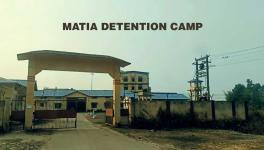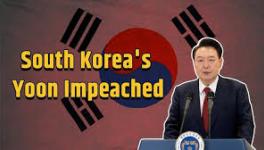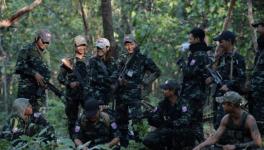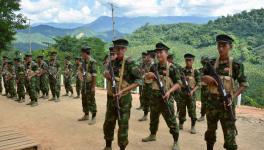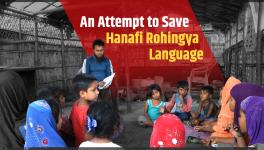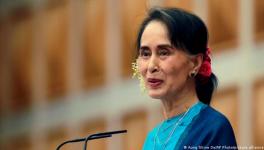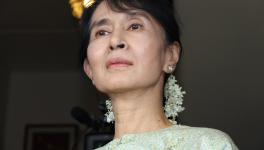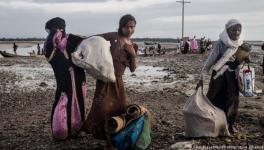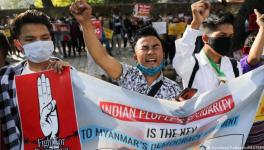The Military Coup in Myanmar is a Lesson to Democracies Everywhere
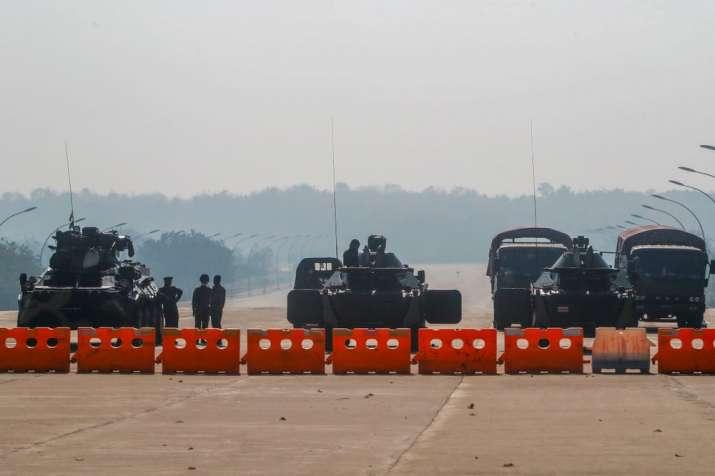
Image Courtesy: AP
On a bright sunny day on 30 March 2012, there was a beeline of visitors from across the world including journalists, diplomats at the picturesque Yangon residence of the National League for Democracy (NLD) leader Aung Sung Suu Kyi on University Avenue Road overlooking Inya Lake. The NLD leader, elegantly dressed, witty in conversation, was supposed to hold a press conference on the occasion of her party contesting by-elections for 48 vacant parliamentary seats on 1 April 2012. This was the NLD’s first electoral contest after it had won the 1991 election, whose results the country’s military had refused to accept.
During the 2012 press conference, a cautiously optimistic Suu Kyi reiterated she would judge the military by its actions. President Thein Sein, a former military general and member of Union Solidarity and Development Party (USDP) had taken a series of noteworthy steps to win her confidence. In phases, he had released hundreds of political prisoners including, in November 2010 Suu Kyi herself.
The 1 February 2021 coup brings to an end to the hope that Myanmar’s path towards democracy would be irreversible. The coup was preceded by an insinuation by the commander-in-chief Min Aung Hlaing that the ‘Constitution could be revoked if the laws were not being properly enforced.’
Thein Sein had invited Suu Kyi to his office in August 2011. He gave a personal touch to their meeting by taking her to his nearby residence where they met his wife. The NLD gained formal recognition as a political party and was registered by the Election Commission. This marked the entry of NLD into the political structure formulated and designed by the military or Tatmadaw as it is locally called. The next general election in 2015 was won by the NLD.
The 1 February 2021 coup brings to an end to the hope that Myanmar’s path towards democracy would be irreversible. The coup was preceded by an insinuation by the commander-in-chief, senior general Min Aung Hlaing, who had said in a speech to senior officers that the “Constitution could be revoked if the laws were not being properly enforced”.
The military took recourse to sections 417 and 418 of the 2008 Constitution which permits a military takeover in the event of an emergency that threatens Myanmar’s sovereignty, or could “disintegrate the Union” or “national solidarity”. While defending its takeover, the military has reportedly claimed that widespread protests on opposite sides of the political divide, both in support of election fraud claims and in support of the elected government, were “threatening national stability”.
The military claims that at least 8.6 million irregularities were found in the voter lists. However, the election commission, appointed by the ruling party—like in any other democracy—said there was no evidence to support the military’s claims. The ruling NLD had won 396 of 476 seats in the 8 November 2020 election, allowing it to govern for another five years.
The USDP, or Union Solidarity and Development Party, was founded by retired generals on 8 June 2010 and had ruled Myanmar from March 2011 to March 2016. It won only 33 seats in the 2020 election. The party was set up as a forum that brings retired generals to a new governing structure; and the fact that it has been routed provides some rationalisation for the military’s move, as Army Chief Min Aung Hlaing is due to complete his second term in office and has expressed personal political ambition in the past.
The contested claims over the integrity of the 2020 election are only the inflection point of tensions between the NLD and military over the last five years. As per the writ of Myanmar’s Constitution, three important ministries relating to national security, namely, defence, home, and border, are to be held by the military. The military also nominates 30% of the Members of Parliament. No amendments can be passed in Myanmar’s Parliament without the approval of 75% of Members of Parliament. While this provision existed even during the USDP’s term from 2010 to 2015, it did not create institutional tensions, for the ruling party comprised of mainly retired military officers who knew the ways of their institution.
Before the 2015 election, Suu Kyi questioned the Tatmadaw’s dislike for federalism and created the National Reconciliation and Peace Centre to hold political dialogue with ethnic groups. The Tatmadaw continued to negotiate with the same groups, focusing on military component and potential ceasefire. There was no cohesiveness between the two approaches.
However, after the 2015 election, the equation changed following the NLD being voted to power. The NLD cadre had faced military repression for nearly two decades.
Apart from frequent tensions between the elected and non-elected legislators within the Parliament, the NLD had refused to call a meeting of the eleven-member National Defence Security Council or NDSC. This council enjoys a statutory position in the Constitution and, with six representatives, has a majority of the military representatives.
The NLD shied away from calling an NDSC meeting and the military saw this as an attempt to undercut the military. Fears of a coup had never escaped the NLD during its first term. On one occasion, the NLD leader reportedly rushed back to Myanmar from abroad as there were fears that the meeting of the NDSC, a military-majority body, is going to be called in her absence as a precursor to stage a coup. She, along with President Win Myint, are members of this council.
The inherent tensions between the civilian and military arms of government have left its impact on crucial matters of national unity and security, and most importantly, on the process of national conciliation with ethnic minorities. Burman ethnicity, predominantly Buddhist, forms the majority and its importance can be sensed from the former name of the country, “Burma”. However, this is not to understate the importance of minorities in the country who form around 35% of the population.
The national reconciliation process came to a halt in the last five years, with no coordination between the two approaches. The coup in Myanmar is a lesson for the international community. The extrication of the military from civilian structures is often an onerous task.
Ethnicity can be a fluid concept in various parts of the country as many are descendants of two or more ethnic races. As per a 2017 study by the California-based Asia Foundation, a non-profit international development organisation, “almost one-quarter of Myanmar’s population hosts one or more ethnic armed organisations (EAOs) that challenge the authority of the central government”. It also noted that though “significant progress towards peace has been made since 2011, yet achieving sustainable and comprehensive peace will ultimately involve further structural change, from effective devolution of political authority, to civilianising the state, to generating agreement on a system of government that is widely recognised as legitimate by people of all ethnic nationalities.”
From 2010 to 2015, several bilateral ceasefire agreements were signed with various armed groups representing ethnic minorities and fighting in the peripheral areas of the country. President Thein Sein started a political track by appointing a former military colleague, Aung Min, to engage with these groups. Aung Min, with his flexible approach and maximalist mandate from the president and the military, was able to nail down ceasefires with many armed groups, most importantly the Karens.
In 2015, the authorities and eight groups spread across the country (which numbered ten in 2018), agreed to sign the Nationwide Ceasefire Agreement (NCA), a mechanism that “stipulates the terms of ceasefires, their implementation and monitoring, and the road map for political dialogue and peace ahead”. Some of these groups had already signed bilateral agreements with the military.
In several interviews before the 2015 election, Suu Kyi questioned the Tatmadaw’s dislike for federalism. She created the National Reconciliation and Peace Centre to hold political dialogue with ethnic groups. Parallel to this, the Tatmadaw continued to hold multilayered negotiations with the same groups, either bilaterally or with their alliances, mostly focusing on the military component, including on the intricate and complex modalities of a potential ceasefire.
Thus, practically, the national reconciliation process had come to a grinding halt in the last five years, with no cohesiveness and coordinated approach between the two approaches.
The coup in Myanmar is a lesson for the international community, including for varying kinds of democracies of the world. The extrication of the military from civilian structures is often an onerous task where one step forward can often lead to two steps back. The coup in Myanmar is no exception to the pattern exhibited in other military hegemonistic countries.
The writer was a member of the UN Secretary-General’s good offices on Myanmar. The views are personal
Get the latest reports & analysis with people's perspective on Protests, movements & deep analytical videos, discussions of the current affairs in your Telegram app. Subscribe to NewsClick's Telegram channel & get Real-Time updates on stories, as they get published on our website.









